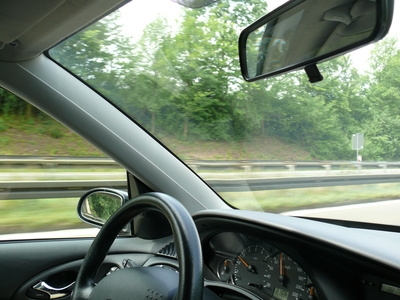
Any Ford vehicle manufactured after 1996 will be operating under the second generation of On-Board Diagnostic codes. Fords preceding this year operate under a different system. Older Fords used to entail going under the hood, connecting to the self testing ports with a jumper wire, and counting flashing lights. There is no need for that with 2005 Fords. You can either take your car to a mechanic and have them retrieve the codes for you, or you can do it yourself with a diagnostic code scanner. Some garages charge diagnostic fees, so buying a scanner can save money over the long term.
Visit an automotive retailer and shop for a code scanner. Keep in mind the various warning lights on your dash. Most OBD-II scanners will not be able to read or reset brake system diagnostic codes. How much you spend will dictate how much you will get out of the scanner. Some only read the codes, while others can interact with the car's computer via a USB cable.
Plug the diagnostic scanner into your Ford's data link connector. This port is located on the underside of the dashboard, somewhere between the trunk release and the center console.
Turn the Ford's electrical system on. Depending on the scanner you bought, the device might turn itself on once it detects a stream of data from the Ford's diagnostic system. If you bought a more economical device you will have to press the power button and turn it on.
Read the codes once they appear on the scanner's read-out, and consult your device's user manual. There should be a list of generic, Society of Automotive Engineer-approved diagnostic codes. Ford also has its own set of codes to supplement the generic ones. These you will not find in either your device's user manual or your Ford owner manual. Ford's website does not have them readily available either, but you can visit a free website such as engine-light-help.com, where Ford-specific codes are listed.